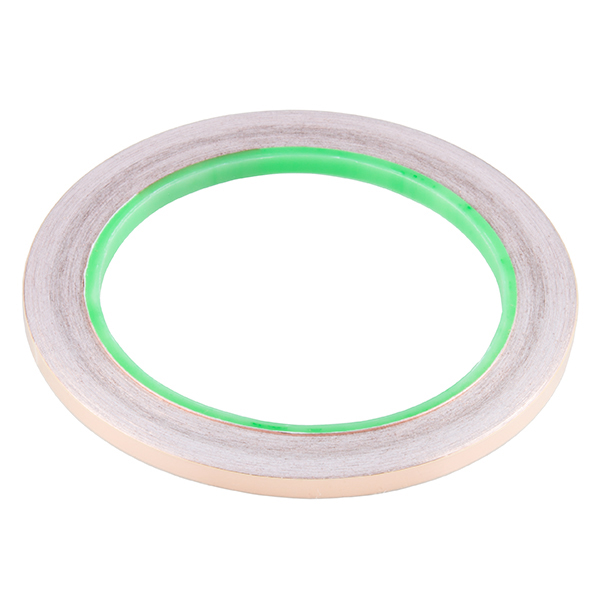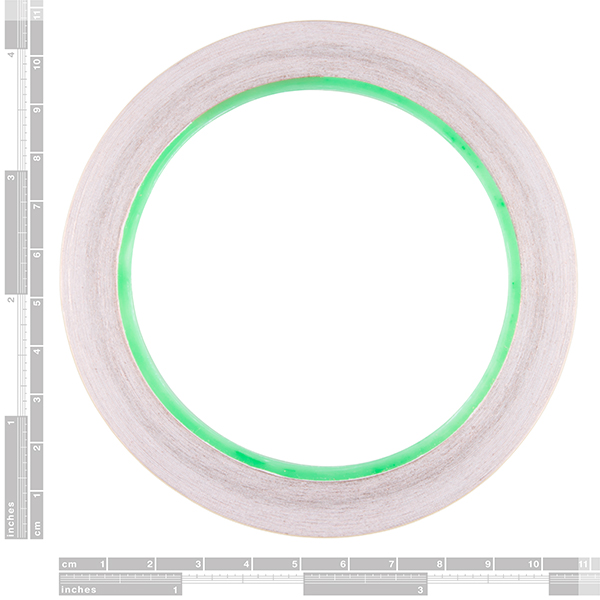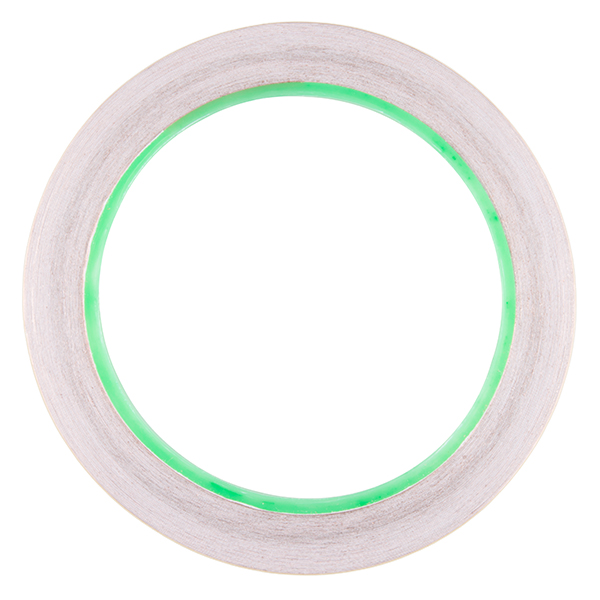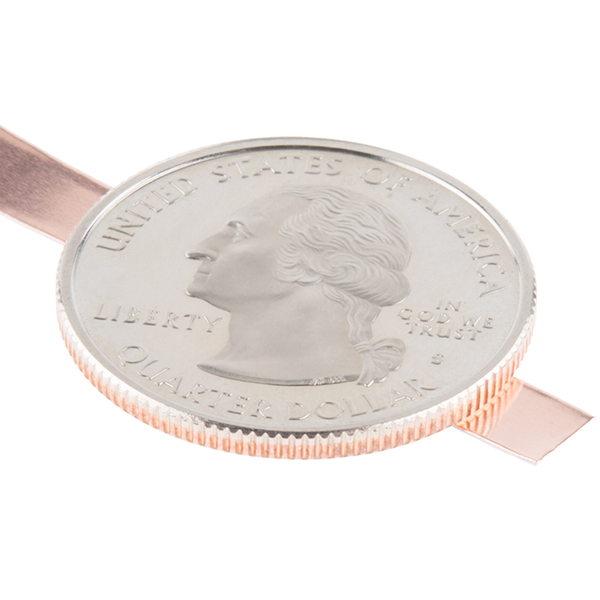Copper Tape - Conductive Adhesive, 5mm (50ft)
Copper tape has countless applications in electronics from creating low-profile traces for electrical components to RF-shielding and antenna-making. Copper tape is even used to join things together using solder, like the stained glass on Tiffany lamps.
This copper tape is backed by a conductive adhesive, is 5mm wide and comes in rolls of 50 feet. Perfect for more precise projects.
- Datasheet
- [MSDS](https://cdn.sparkfun.com/datasheets/Prototyping/Copper foil tape MSDS-EN.pdf)
Copper Tape - Conductive Adhesive, 5mm (50ft) Product Help and Resources
LED Butterfly Pop Up Card
August 19, 2015
Craft an illuminated butterfly pop up card with copper tape, two LEDs, and a battery.
Let It Glow Holiday Cards
November 20, 2014
Craft a glowing card for friends and family this holiday season with paper circuits - no soldering required!
Light-Up Valentine Cards
January 27, 2015
Light up your love with paper circuits - no soldering required!
LED Robot Pop Up Card
August 19, 2015
Craft a paper circuit pop up card with a cycling RGB LED, battery, and copper tape.
The Great Big Guide to Paper Circuits
May 22, 2015
Let's take a look at different materials we can use to combine paper crafting and electronics.
Origami Paper Circuits
May 26, 2015
A quick tutorial to get you started in the world of light up origami flowers.
Paper Circuit Pin
April 11, 2016
This quick craft project shows you how to create a circuit using copper tape instead of wire to light up an LED and make a wearable piece of e-craft art.
SparkFun Paper Circuit Kits
July 5, 2018
Learn how to build a simple paper circuit using copper tape, a 5mm LED, and a 3V coin cell battery.
Craft a Holiday Greeting with Love to Code
March 23, 2018
Craft your own paper circuit holiday greeting using the LEDs, a Chibi Chip, Love to Code!
Interactive 3D Printed LED Diamond Prop
April 19, 2018
In this tutorial, we will learn about how to create an interactive theatrical prop for a performance by 3D printing a translucent diamond prop using a non-addressable RGB LED strip and AT42QT1011 capacitive touch sensing.
Paper Circuit Traces
The 5mm copper tape is a great option for making paper circuit traces. It's a better option compared to using the 2" copper tape. Here's an example from the Light Up Valentine Cards tutorial:
Comments
Looking for answers to technical questions?
We welcome your comments and suggestions below. However, if you are looking for solutions to technical questions please see our Technical Assistance page.
Customer Reviews
3.8 out of 5
Based on 5 ratings:
It worked intermittently
The project I used this for was a partial success. Making consistently working connections was tricky and finicky. It worked eventually but it took many tries.
Useful but difficult
My students were able to build circuits with the conductive tape. However the tape would crinkle easily and once it crinkled it would not work as expected.
Excellent product
I’ve used this tape with my students for the past 4 years to make a light up Valentine card. It’s great!!
Okay for paper circuits but adhesive not very conductive
Copper tape is great for doing things with Makey Makey or prototyping circuits on paper. Definitely get the version with conductive adhesive if that is your application. Even though I find the adhesive to not be very conductive, it's better than nothing! Use caution when using with kids - the edges of any copper tape are pretty sharp and they can easily cut themselves if they run their fingers along the edge.
My only suggestion on this is to somehow improve how conductive the adhesive on the back is. When components are taped to the top with regular tape, things work very well, I just find it finicky and difficult to use when taping components down and expecting the adhesive to provide a good connection.
It does two things at once!






What is the difference between your conductive adhesive and adhesive back copper tape??
The difference is in the adhesives. The conductive adhesive is exactly that; if you lay one piece of tape over another, the conductive adhesive will allow the two strips to conduct to each other. The non-conductive adhesive is insulating; if you lay one piece over another, they will not conduct to each other.
The conductive adhesive tape is great for paper circuits; it lets you easily make circuits from multiple pieces of tape rather than having to carefully bend a single long piece for each connection.
Can this copper tape be used to make LiPo battery packs? In other words what current will it handle. I have 18650 battery holders that slide together but they don't have any leads or tabs for connecting the batteries. I'm hoping this tape could be used and not have to solder wires across the tops.
The copper itself can probably handle around 5 amps, but it's going to heat up carrying that much. Possibly more heat than you might consider acceptable. The conductive adhesive on the other hand likely won't be able to pass more than a few hundred mA. I'm afraid that this tape likely would not do well in an application like this.